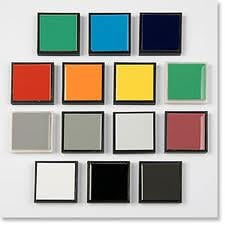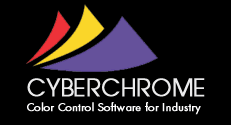What is Inter-Instrument Agreement? Should I care? How do you determine it? How do I know what my numbers are? Can I measure it myself?
Inter-instrument agreement is a measure of how closely two or more color instruments read color the same. In layman’s terms it measures how close your absolute L*a*b* readings are to someone else’s on the exact, same samples.
Why should I care about inter-instrument agreement? The most important reason is to be able to share electronic color standards and colorant databases. If you are trying to compare the color values taken on your spectrophotometer to those taken on another spectro, conventional wisdom has long held that you could compare the deltas or color differences on a set of samples, but not the absolute values. However, in today’s workplace technology has made it extremely easy to communicate absolute as well as color difference values. Many companies are successfully sharing electronic color standards not only within a company but within a supply chain around the world.
How do you determine the inter-instrument agreement?  Typically inter-instrument is a test done by the instrument manufacturer in the quality assurance process of manufacturing an instrument. The new instrument is compared to the “master” instrument or the average of a population of typical instruments. Usually a set of 12 BCRA tiles plus a white and black tile are used for the test. The tile set is measured on the target instrument and compared to the known values as measured on the master instrument. A color difference for each tile is calculated between the master and the target instrument. Then the DE’s are averaged over all the tiles and this number becomes the Inter-instrument agreement for the target instrument. Manufacturers of instruments publish their specification or limit for the DE between instruments. The average DE over these 14 tiles must be less than this number to “pass” their quality control testing. Each DE on an individual tile must also be less than a certain limit, although this limit is not always published.
Typically inter-instrument is a test done by the instrument manufacturer in the quality assurance process of manufacturing an instrument. The new instrument is compared to the “master” instrument or the average of a population of typical instruments. Usually a set of 12 BCRA tiles plus a white and black tile are used for the test. The tile set is measured on the target instrument and compared to the known values as measured on the master instrument. A color difference for each tile is calculated between the master and the target instrument. Then the DE’s are averaged over all the tiles and this number becomes the Inter-instrument agreement for the target instrument. Manufacturers of instruments publish their specification or limit for the DE between instruments. The average DE over these 14 tiles must be less than this number to “pass” their quality control testing. Each DE on an individual tile must also be less than a certain limit, although this limit is not always published.
What if I want to compare my spectrophotometer to my supplier’s or someone else’s instrument in the supply chain? Can I do this myself? Certainly you can. First you need to understand that when instrument manufacturers do this test, it is always in very controlled conditions for temperature and humidity. You will need a set of durable and stable color standards such as BCRA tiles or a Diagnostic Tile Set from Mount Baker Research. Ceramic tiles are the best transfer standards to use since they are the most stable and durable materials currently available.
The same set of ceramic tiles must be read on each instrument under controlled conditions of temperature and humidity. The instrument settings for specular component, UV component, and aperture size and lens setting must be the same for both instruments. The readings from the target instrument are then compared to those from the master instrument and a DE is computed between the two readings. Usually D6500, 10 ° observer, and CIE L*a*b* are used for the comparison. After obtaining a DE for each tile, the average DE for all the tiles is computed and this is the value typically used to specify Inter-Instrument Agreement.
What kind of numbers should I expect? What can I do to make it better?
You may be surprised to find out that your inter-instrument agreement numbers are larger than the published data from the manufacturer. First of all, when done by the manufacturer, the reference instrument is always an instrument that has been maintained in pristine condition and is designated for this purpose. When you do the test, you are comparing two production machines that may be as far apart as allowed. Therefore, if the specification on the IIA is DE*<0.15, then it’s possible for the two units under test to be as far as 0.30 apart and still be in spec. While that is not the normal case, the bigger difference can be attributed to the actual wear and tear and environmental conditions that the instrument is used under. No doubt all instruments will meet the manufacturer’s spec “right out of the box”. However in the “real world” of color measurement, instruments are used under less than pristine conditions, and dust and dirt can wreck havoc with the fine optics of a spectrophotometer.
What can you do to make it better?
A disciplined approach to monitoring instrument performance is crucial. The simple daily calibration routine is not enough to ensure that your spectro is performing within specification. While adding a daily green tile test to the routine is advisable, it is still not the complete answer to knowing whether your instrument is measuring color precisely.
There are two things can do to ensure that your instrument is working properly. Tip #5 in this series will tell you how to do this and Tip #6 will discuss how instrument profiling is used to give you the best possible Inter-Instrument-Agreement between spectrophotometers.
